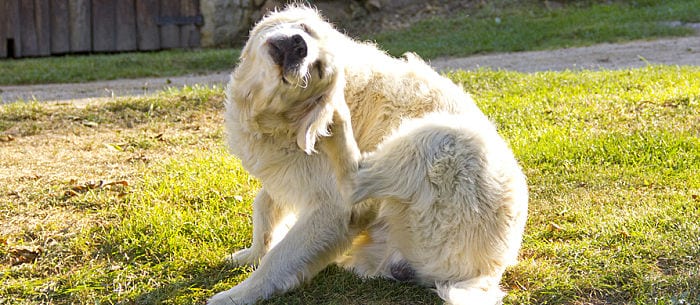You’ve heard about people suffering from staph infections, but did you know that staph infection in dogs could happen too? Dr. Danielle Lafave, an associate veterinarian at Deepwood Veterinary Clinic, and Dr. Elizabeth Carney, a mobile veterinarian and the founder of the site Your Pets Need This, explain why you need not worry if your dog contracts the infection. Treatment and keeping your dog comfortable are simpler than you think.
Why Do Dogs Get Staph Infections?
Just like humans, dogs always have bacteria present on and in their bodies, including different types of staph (or Staphylococcus), most commonly appearing as a skin infection. In fact, one of the most common canine species of staph is a normal bacterial inhabitant of at least half of healthy dogs and does not cause any issues. But if a dog is injured, suffering from illness or has underlying allergies, the bacterium can start to cause problems, explains Dr. Lafave.
When the surface of the skin is broken or overly moist, circulation is impaired or the immune system is compromised, the staph bacteria gets a chance to cause an infection.
What Are the Symptoms?
Skin infections can occur anywhere on a dog’s body, though they may be hard to spot initially because of your dog’s furry coat. As the infection increases and hair begins to fall out, you’ll notice the infection more easily. “The skin may be crusty or scaly, with areas of redness,” says Dr. Carney. Papules and blisters might form, so your dog will probably be itchy and uncomfortable in the infected area.
How Can You Treat It?
Though treatment of staph varies, most often it requires antibiotics. Dr. Lafave stresses the importance of completing any course of antibiotics, even if the infection already seems to be gone. Staph infections are often inflamed and itchy. Topical treatments like medicated shampoos and sprays can help treat the infection, while also providing some relief for your dog, according to the American Veterinary Medical Association (AVMA). Your veterinarian, depending on testing, might suggest an anti-inflammatory medication, antihistamines or steroid treatment to help.
As the medication takes its course, you can also help give your dog some relief for the itchiness at home. Cool water baths will often help soothe an itchy pet. Use a gentle oatmeal shampoo and avoid hot water, which can make itching worse. Some owners even put a damp T-shirt on their dog after the bath, to keep the skin cool and damp longer and help retain healing moisture, says Dr. Lafave.
Is Staph Contagious?
Staph can be transmitted from one dog to another and from humans to dogs. However, it’s very rare for staph infections to spread from pets to people, although studies show it’s not unheard of. People with diminished immune systems, like the very young or very old, as well as those undergoing chemotherapy, face the greatest risk of infection.
Since most common staph bacteria occur naturally in dogs, it’s impossible to avoid the risk of infection entirely, says Dr. Lafave. However, you can minimize that risk. When it comes to dealing with any infection the best way to stay safe while caring for your pet is to practice good hygiene. If your pet has a skin infection you’re managing at home, wash your hands immediately after touching the infected area and changing any bandages. You can also wear disposable gloves when tending your dog to help prevent spreading bacteria.
It’s also important to keep your dog from coming in contact with other dogs who have skin infections or open wounds. If your dog is bitten by another animal, see your vet immediately. You should also keep a close eye on any scratches or lacerations for redness, swelling or discharge. Always make sure your dog doesn’t lick or chew any wounds.
With the right combination of medical treatment and at-home care, your dog will be itch-free and happy again. For more on keeping your dog healthy, check out some Pet Health and Safety Advice.
Shahrzad Warkentin is a dog owner to an energetic rescue dog named Charlie. As a freelance writer she has had several years of experience covering pet care and health.
